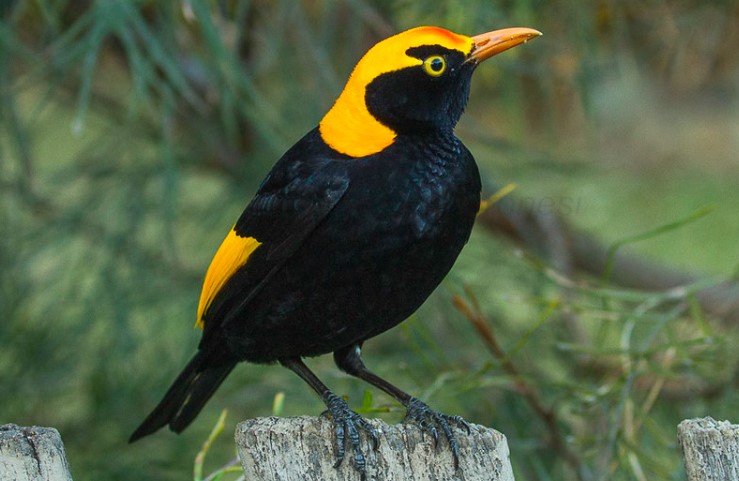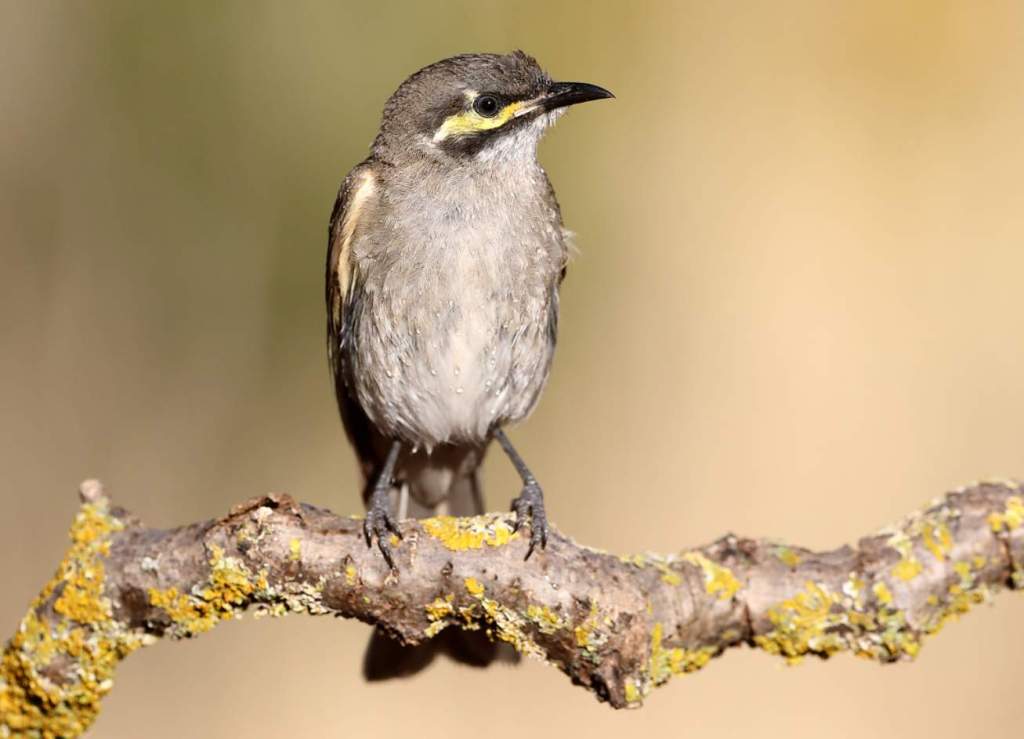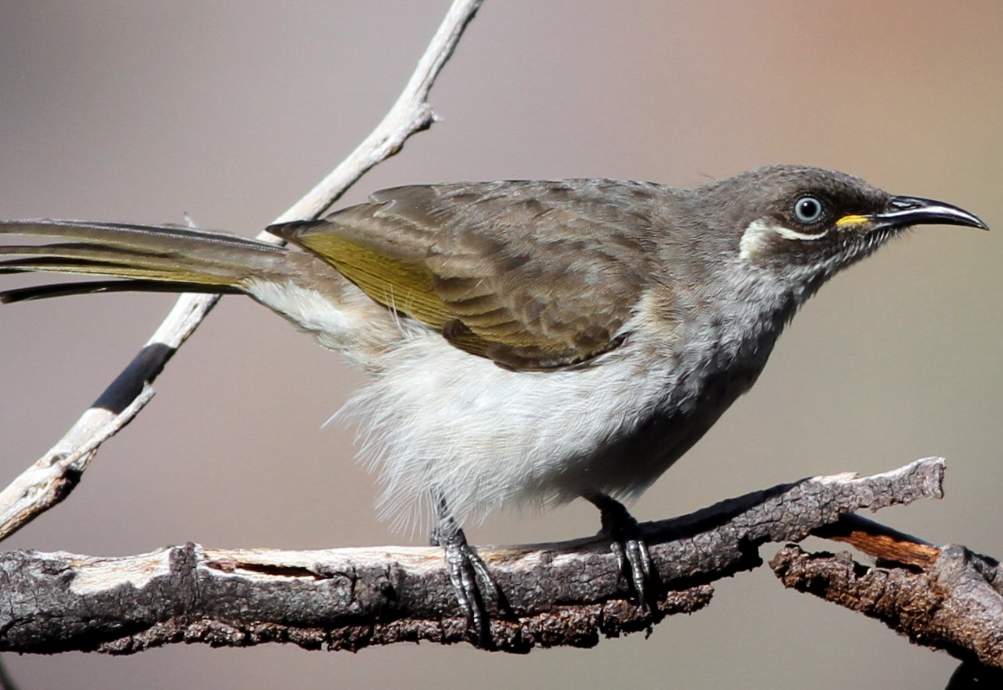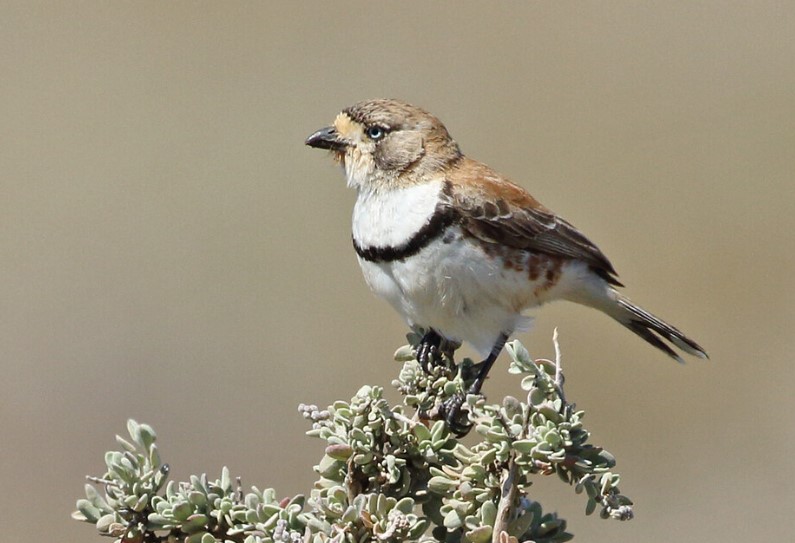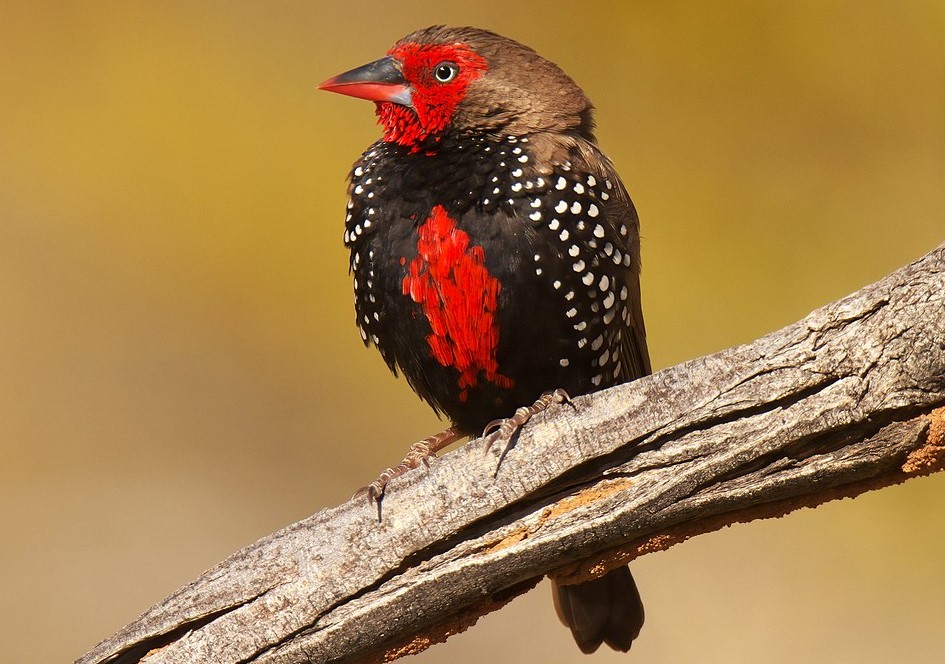Regent Bowerbird (Sericulus chrysocephalus) lives in the mid-eastern coastal rainforests. They hide in tangles of ferns and lawyer vines on the forest floor, building simple avenues of upright twigs. The name honors a British prince-regent. It may be the plumage as well as the bower that attract females for mating, as regents are polygynous like all bowerbirds. In the males’ arenas, males display their displays; in the females’ arenas, females mate and then leave to nest independently. The bower builds the nest with loose platforms of sticks about a meter in diameter. The nest is attended by several adult males and immatures.
There are parallel walls ranging in length from 170-200 mm to 300 mm, with a distance of 60-90 mm between them. A mixture of saliva and crushed leaves is used to paint them yellow. Rat feces, snail shells, berries, galls, pebbles, and leaves decorate the runway between the walls. The tones are all red, black, yellow, and brown; even orange peel is added. When a female approaches or enters the avenue, the male displays. His flashing head and bulging eyes are fixed on her as he bounds and prances about the bower. While churring and wheezing, he prostrates in front of her, tail fanned, wings spread, drooping, and sometimes beating to show off the brilliant banding on his wings. An arena-like clearing, which the male makes throughout the forest and where he displays, is used for mating.
Bowerbirds, such as Regent Bowerbirds, are fruit-eaters, living mostly in the forest’s mid- and upper levels. They descend to the ground only for bower making, display, and mating. It is not uncommon for them to roam locally into more open countries in loose-fed flocks of 15–30 or more birds, both immature and mature females and males. The other names for this attractive bird are Australian Regent Bird and Regent Bird. The average size of Regent Bowerbirds is about 250–280 mm in length; however, the male bird is a bit smaller than the female.
MALE Regent Bowerbirds display brilliant black and yellow. The crown of the upper mantle is a rich golden yellow. Sometimes the feathers are short, crisp, plush, and tinted carmine. The remainder of the back is black with a subtle purple gloss. Wings are black with a broad band of golden yellow across the flight feathers. The tail is dark black in color with bow-like pointed outer feathers. The underparts and side of the head are black, with a black line over the eye. Their eyes are bright yellow. Bill is yellow. Their feet and claws are black. Female: Head dull brown with fine dusky spots; dull soot-black patch in the hind crown. Back and rump fawn brown, feathers broadly scalloped with white, black-edged crescents towards the upper back. Wings dull brown; flight feathers with paler edges, washed underneath with dull yellow-grey; wing coverts barred.
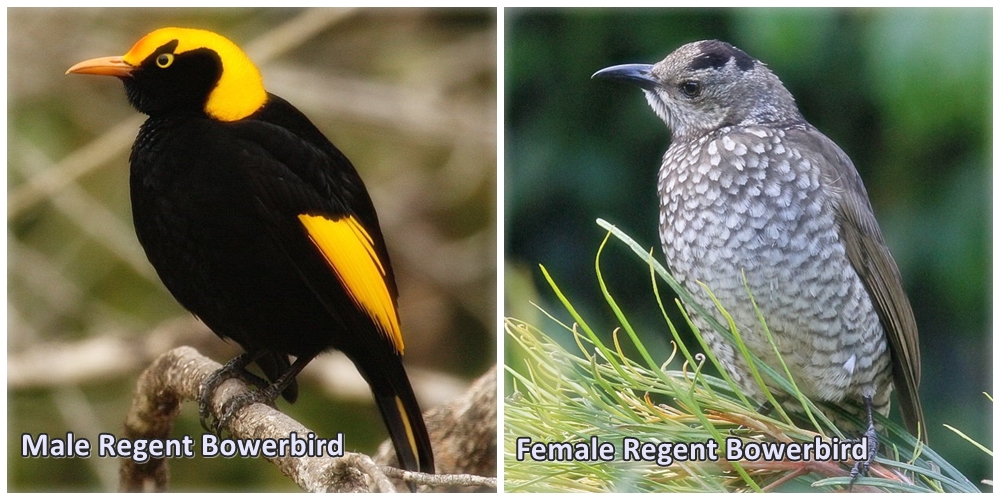
The tail is dull brown. Underparts are cream-white except for a black spot in the throat, mottled and scalloped with brown edges to feathers, especially an upper breast; scallops change to fine bars in the belly and flanks. The eyes are an unappealing yellow. The bill, feet, and claws are dusky. The immature bird is like an adult female but with dusky brown eyes. Both sexes can utter a harsh churrring squawk, te-aar, or similar squeaking notes, as well as tact and alarm calls. Regent Bowerbirds sing soft whisper songs; low, explosive chattering, and hisses. Hence, it is possible there may be some mimicry by adult males during breeding rituals and, to a lesser extent, by females and immatures.
The nesting and breeding seasons last from October to January. Birds build their nests from the twigs of shrubs, which are concealed in dense vine tangles 3–25 meters high. It is often within 20 meters of the bower. The bird lays two eggs, rarely three; which are pale buff-grey, with delicate brown to black scrawls and blotches and some underlying marks of lavender. The eggs are oval in shape and measure 37 x 26 mm. Incubation takes place between 18 and 19 days for females. Therefore, there will be one brood per season. The regent bowerbird is a medium-sized bird that is a sexually dimorphic bowerbird. As far as distribution in Australia, it is mainly found in subtropical rainforests and their edges in eastern Australia. This is from the Clarke and Berserker Ranges, Queensland, where it is isolated, and the Dawes Range south to the Hawkesbury River, near Sydney.
Read More: Flame Bowerbird: Brilliant Colorful Rainforest Bird
